Not herons but rather more closely related to spoonbills, they have strikingly red bill and legs.
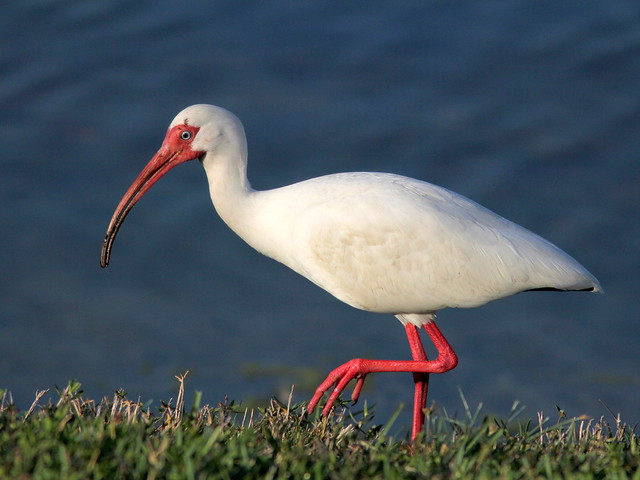
During mating season, around the middle of winter, the males squabble to establish dominance.
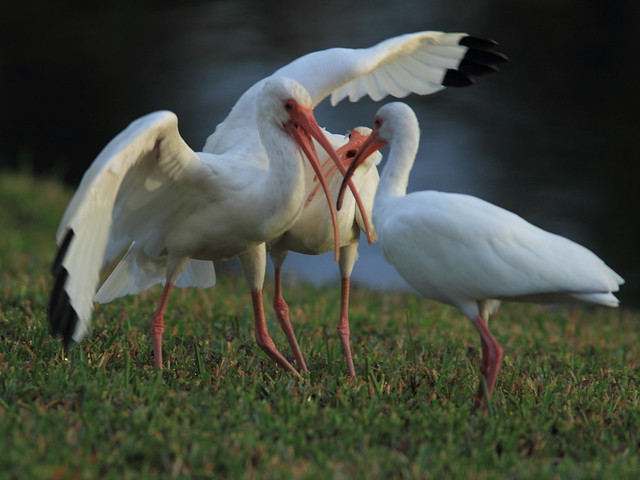
Tactile feeders, the ibis probes into the mud and clamps down upon prey. This one just caught a crayfish.
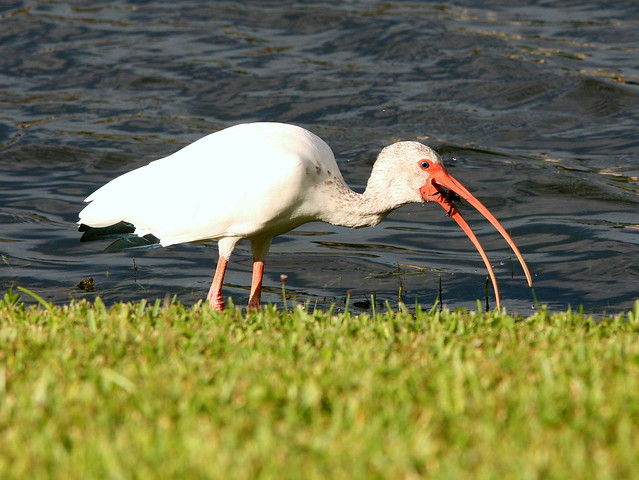
Egrets are also common. Great Egrets might be seen at any time. They are sight feeders and either wait patiently or stalk for prey such as small fish, crustaceans and insects.
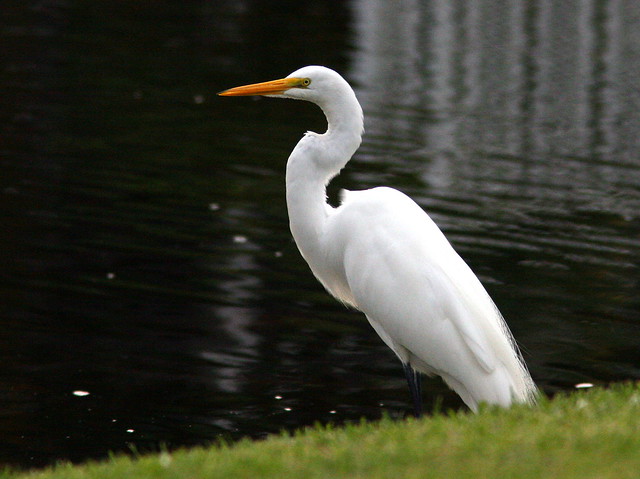
They are quite wary, and I find it difficult to obtain a closeup. Note the long bright orange-yellow bill and all-black legs.
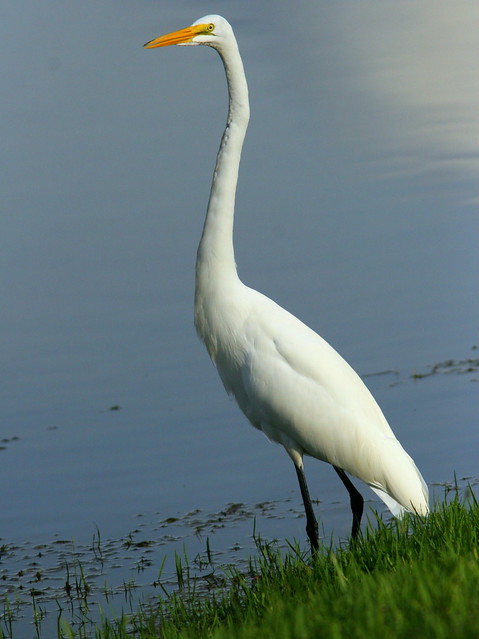
The smaller Snowy Egret appears sporadically. A more restless feeder, it quickly traverses the shoreline in search of food. Its bill is black and its "golden slippers" contrast with mostly black legs. It startles prey by stirring the water with its yellow feet.

Even smaller is the Cattle Egret, distinguished by its short yellow bill and dark legs. Rather than hunting in the water, it searches our garden for insects and lizards.
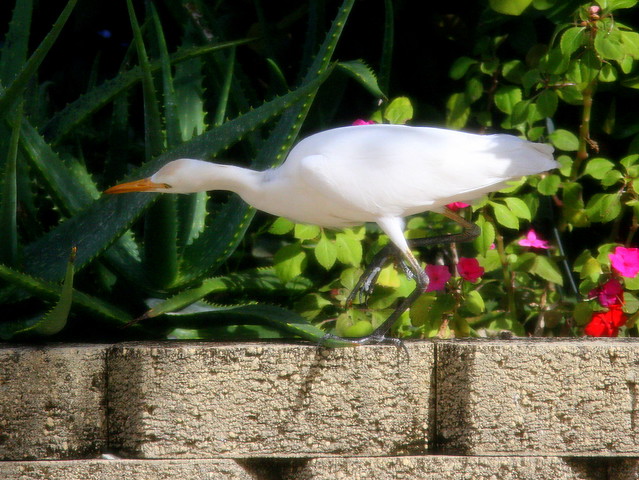
The Cattle Egret develops rusty plumes on its head and breast during breeding season.

We usually have Little Blue Herons on the lake, but most are dark adults. During their first year they are white, and we must take a closer look to postively identify them. Deliberate hunters, they seem to be near-sighted as they walk slowly with their bills almost touching the water (or the grass, as this one is after a dragonfly). Greenish legs and a light bill with a dark tip are distinctive features.

Less common, especially in recent years, is the Wood Stork. A tactile feeder, it slowly moves along with half-open bill. Like the Snowy Egret, it stirs the water with its feet, which are bubble-gum pink.
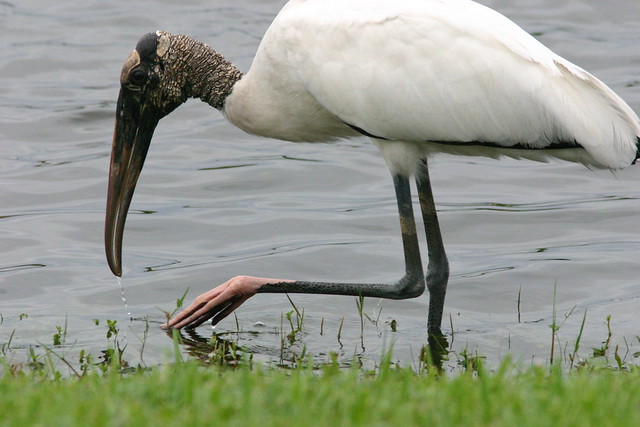
Rare indeed is the visitor which occasioned this post. Look closely and compare it with the white waders described above.

It is a "Great White Heron," a subspecies of the Great Blue Heron. Admittedly, I almost passed it off as a Great Egret when I first saw it across the lake. However it seemed bulkier and had a habit of roosting in one spot for a long time, even up to an hour, so I took a closer look. This was my first photo, which confirmed my suspicions.
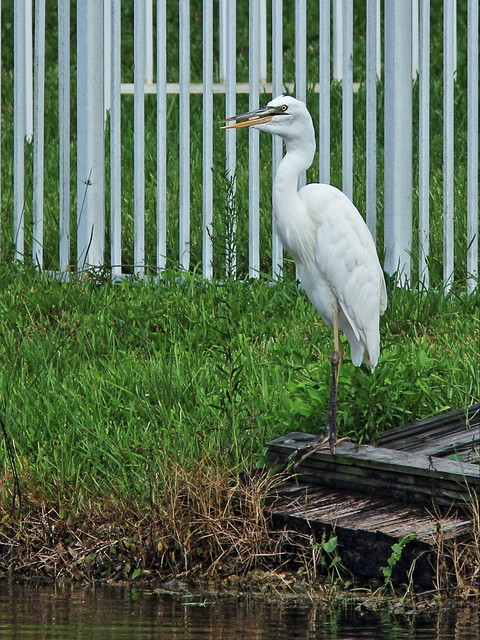
Known to breed in Cuba and some of the Caribbean Islands as well as the Yucatan Peninsula and on islands off the coast of Venezuela, the Great White Heron's North American range is almost exclusively limited to the Florida Keys and the tip of the Florida south of Miami.
Its upper mandible is dark, contrasting with the orange lower bill, quite identical to the common "blue" form of the Great Blue Heron.This bird's thighs are light, and its lower legs are darker but not black.
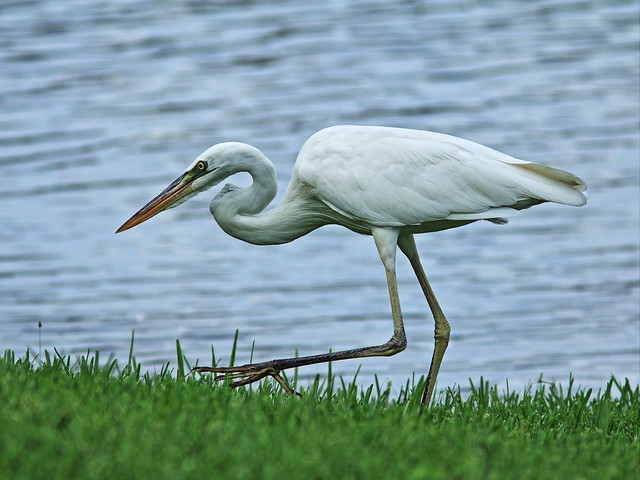
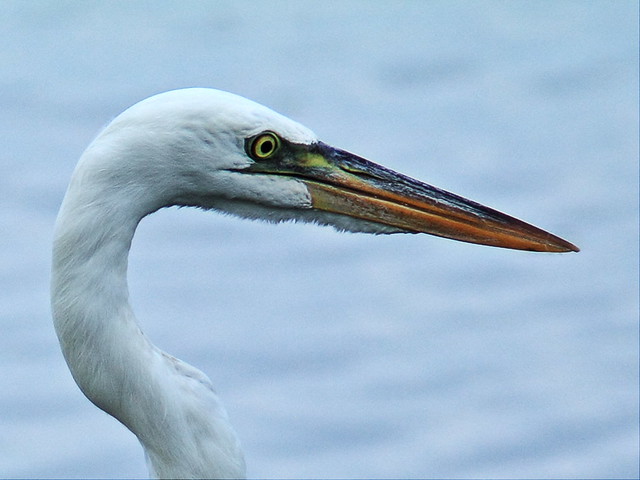
This bird was earlier considered to be a variant color morph of the nominate Great Blue Heron (Ardea herodias herodias), but is actually a distinct subspecies, Ardea herodias occidentalis. The blue and white subspecies occasionally interbreed.
Since Great Egrets are sometimes misidentified as Great White Herons, I had the unusual opportunity to photograph both individually from the same distance, walking across a lawn on the opposite side of the lake. Both photos were taken at a range of 140 meters and nearly the same angle. They exhibit the larger size and more robust body of the Great White Heron.
Great White Heron at 140 meters:

Great Egret at 140 meters:

The Great White Heron prefers coastal waters and rarely ventures north of its habitual range, but has been documented along the Atlantic into New England and even Canada. Inland sightings are quite rare. Our home is 18 miles away from the ocean, and this was the first one to visit our yard.
The Great White Heron spent much time on our back lawn, visiting five days over a nine day period in the middle of August . It came so close that even after I backed away I could not fit the entire bird in the video frame!


Lovely images!!!! Love these birds. Don't always get to see them here in the desert:) In fact, I never have!
ReplyDeleteAn interesting and useful post with beautifully exposed images. Thanks for sharing them.
ReplyDeleteSome of my favorite birds! Wonderful descriptions of the distinctions between these beautiful creatures.
ReplyDeleteSo many beautiful birds visiting your backyard in Florida. The Great White Heron is a real find. Terrific photographs of so many lovely birds! Great post!
ReplyDelete